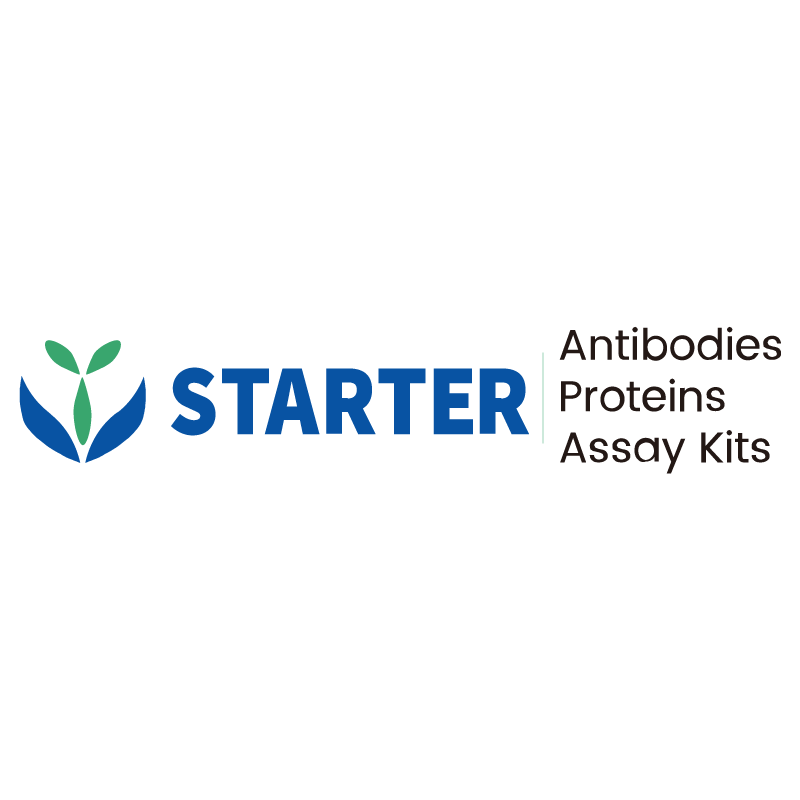WB result of LPA Rabbit pAb
Primary antibody: LPA Rabbit pAb at 1/1000 dilution
Lane 1: human serum lysate 5 µg
Lane 2: human plasma lysate 5 µg
Secondary antibody: Goat Anti-Rabbit IgG(H+L) Recombinant pAb (min X Hu Sr Prot), HRP conjugated at 1/10000 dilution
Predicted MW: 226 kDa
Observed MW: 110-500 kDa
Product Details
Product Details
Product Specification
| Host | Rabbit |
| Antigen | LPA |
| Synonyms | Apolipoprotein(a); Apo(a); Lp(a); LPA |
| Immunogen | Recombinant Protein |
| Accession | P08519 |
| Antibody Type | Polyclonal antibody |
| Isotype | IgG |
| Application | WB, IHC-P |
| Reactivity | Hu |
| Positive Sample | human serum, human plasma |
| Purification | Immunogen Affinity |
| Concentration | 0.5 mg/ml |
| Conjugation | Unconjugated |
| Physical Appearance | Liquid |
| Storage Buffer | PBS, 40% Glycerol, 0.05% BSA, 0.03% Proclin 300 |
| Stability & Storage | 12 months from date of receipt / reconstitution, -20 °C as supplied |
Dilution
| application | dilution | species |
| WB | 1:1000 | Hu |
| IHC-P | 1:4000 | Hu |
Background
LPA protein refers to apolipoprotein(a), the distinctive glycoprotein covalently linked via a single disulfide bond to apolipoprotein B-100 on a low-density lipoprotein (LDL)-like particle to form lipoprotein(a) [Lp(a)], a liver-synthesized macromolecule whose circulating concentration—ranging from undetectable to >100 mg/dL and varying more than 1,000-fold among individuals—is almost entirely dictated by the LPA gene’s size polymorphism of kringle IV repeats, rendering levels largely fixed from early childhood and minimally responsive to diet, lifestyle, or standard LDL-lowering therapies. Beyond its structural role, apo(a)’s striking sequence homology to plasminogen imparts anti-fibrinolytic and pro-thrombotic properties, while its capacity to bind oxidized phospholipids and promote macrophage lipid uptake confers potent atherogenicity, making elevated Lp(a) an independent, causal risk factor for atherosclerotic cardiovascular disease, calcific aortic stenosis, and thrombo-embolic events, although its precise physiological function remains elusive.
Picture
Picture
Western Blot
Immunohistochemistry
IHC shows positive staining in paraffin-embedded human liver. Anti-LPA antibody was used at 1/4000 dilution, followed by a HRP Polymer for Mouse & Rabbit IgG (ready to use). Counterstained with hematoxylin. Heat mediated antigen retrieval with Tris/EDTA buffer pH9.0 was performed before commencing with IHC staining protocol.
Negative control: IHC shows negative staining in paraffin-embedded human liver. Anti-LPA antibody was used at 1/4000 dilution, followed by a HRP Polymer for Mouse & Rabbit IgG (ready to use). Counterstained with hematoxylin. Heat mediated antigen retrieval with Tris/EDTA buffer pH9.0 was performed before commencing with IHC staining protocol.
IHC shows positive staining in paraffin-embedded human hepatocellular carcinoma. Anti-LPA antibody was used at 1/4000 dilution, followed by a HRP Polymer for Mouse & Rabbit IgG (ready to use). Counterstained with hematoxylin. Heat mediated antigen retrieval with Tris/EDTA buffer pH9.0 was performed before commencing with IHC staining protocol.
IHC shows positive staining in paraffin-embedded human glioma. Anti-LPA antibody was used at 1/4000 dilution, followed by a HRP Polymer for Mouse & Rabbit IgG (ready to use). Counterstained with hematoxylin. Heat mediated antigen retrieval with Tris/EDTA buffer pH9.0 was performed before commencing with IHC staining protocol.
Negative control: IHC shows negative staining in paraffin-embedded human ovarian cancer. Anti-LPA antibody was used at 1/4000 dilution, followed by a HRP Polymer for Mouse & Rabbit IgG (ready to use). Counterstained with hematoxylin. Heat mediated antigen retrieval with Tris/EDTA buffer pH9.0 was performed before commencing with IHC staining protocol.


